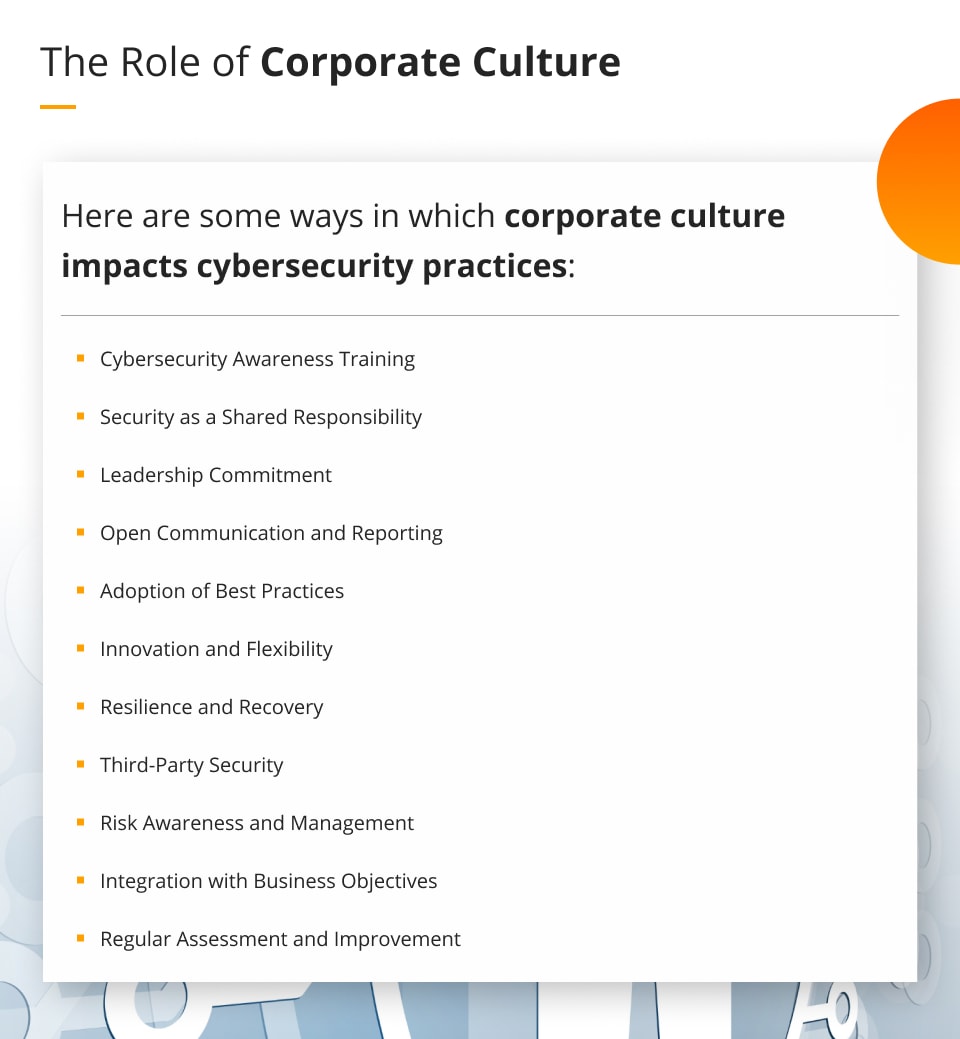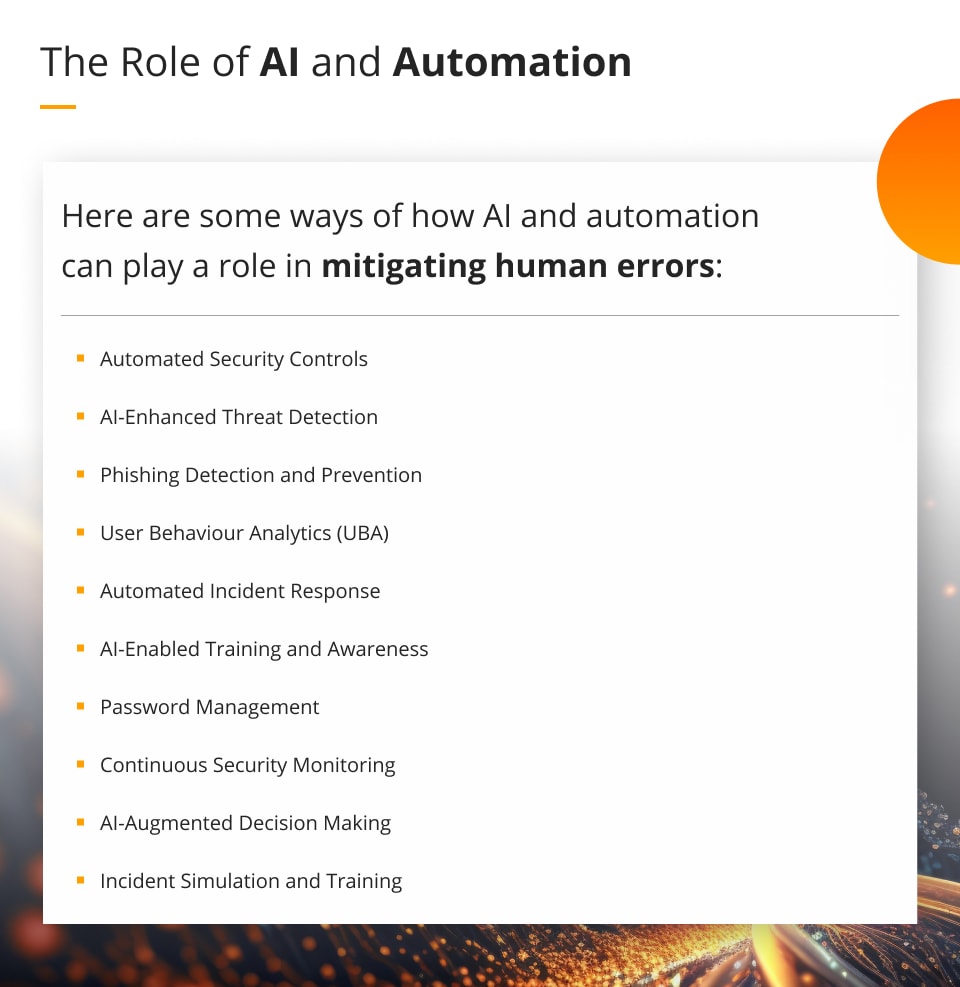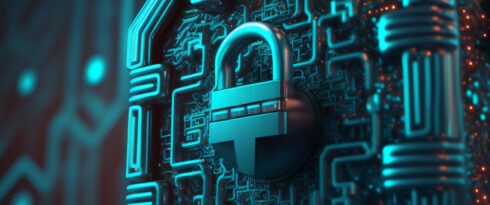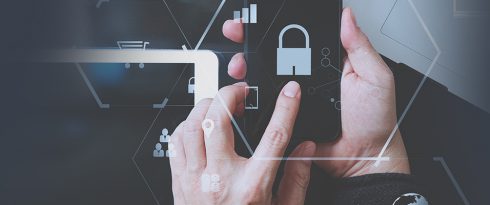
The human factor in cybersecurity: the greatest challenge. Part 2
Let's explore strategies for improving employee cybersecurity awareness and the role of AI and automation in effective cybersecurity.
In my previous article about The human factor in cybersecurity, I wrote about human risks that influence cybersecurity, I also presented an overview of phishing attacks. Now, I am focusing on strategies for improving employee cybersecurity awareness and the role of AI and automation in effective cybersecurity. Let’s dive in into the details.
Building a human firewall: strategies for enhancing employee cybersecurity awareness
Empowering employees to become the first line of defence against cyber threats by increasing their cybersecurity awareness and knowledge is called building a “human firewall”. Its importance cannot be understated. Let’s look at some strategies to enhance employee cybersecurity awareness and create such a strong human firewall.
The Role of Corporate Culture in Shaping Cybersecurity Practices
Corporate culture plays a vital role in shaping cybersecurity practices within an organisation. The values, attitudes, and behaviours that make up the corporate culture influence how employees perceive and prioritise cybersecurity, how they interact with technology and data, and how they respond to security threats.
Here are some ways in which corporate culture impacts cybersecurity practices:
- Cybersecurity Awareness Training
A strong cybersecurity-focused corporate culture emphasises the importance of security awareness and continuous training for all employees. It promotes ongoing education to keep employees informed about the latest threats and best practices. - Security as a Shared Responsibility
In a positive corporate culture, cybersecurity is viewed as a shared responsibility that extends beyond the IT department. All employees understand that they play a crucial role in protecting the organisation’s assets and data. - Leadership Commitment
The commitment of top-level leadership to cybersecurity is a critical aspect of corporate culture. When leaders prioritise cybersecurity initiatives and allocate resources accordingly, it sends a clear message to employees about the organisation’s commitment to security. - Open Communication and Reporting
A culture that encourages open communication and reporting of security incidents without fear of blame fosters a proactive approach to cybersecurity. Employees are more likely to report potential threats, leading to faster response times and mitigation. - Adoption of Best Practices
A positive corporate culture promotes the adoption of cybersecurity best practices throughout the organisation. This includes using strong passwords, enabling multi-factor authentication, keeping software up to date, and following data handling guidelines. - Innovation and Flexibility
A culture that embraces innovation and adaptation is more likely to adopt new and effective cybersecurity technologies and practices to stay ahead of evolving threats. - Resilience and Recovery
A resilient corporate culture emphasises the importance of preparedness and rapid recovery in the face of cyber incidents. Employees are encouraged to learn from past experiences and continuously improve the organisation’s cybersecurity posture. - Third-Party Security
A security-conscious corporate culture extends its cybersecurity practices to third-party vendors and partners. It requires third parties to meet specific security standards and compliance requirements. - Risk Awareness and Management
Employees in a security-focused culture understand the risks associated with their actions and decisions. They are more likely to consider security implications before taking actions that could expose the organisation to vulnerabilities. - Integration with Business Objectives
In a positive corporate culture cybersecurity practices align with business objectives. Security is not seen as a hindrance but as an enabler that protects the organisation’s reputation, customer trust, and overall success. - Regular Assessment and Improvement
A culture that promotes regular assessment and improvement of cybersecurity practices ensures that security measures evolve to address emerging threats effectively.
A positive corporate culture that values and prioritises cybersecurity creates a fertile environment for strong cybersecurity practices. When employees understand the significance of their role in safeguarding the organisation’s assets and data, they are more likely to adhere to security policies and respond proactively to potential threats. This holistic approach to cybersecurity, encompassing technology, processes, and people, is crucial for building a resilient defence against cyber threats.
People-centric Cybersecurity: A Paradigm Shift in Cyber Defense
People-centric cybersecurity represents a paradigm shift in cyber defence, emphasising the central role of individuals within an organisation as active participants in protecting against cyber threats. It acknowledges that technology alone cannot provide complete security and that human factors, including employees, end-users, and stakeholders, play a critical role in both contributing to and mitigating cyber risks. This approach focuses on understanding human behaviour, motivations, and vulnerabilities to design more effective cybersecurity strategies.
Some key aspects of the people-centric cybersecurity paradigm include:
Human Behaviour Analysis
Understanding human behaviour is central to this paradigm. Cybersecurity experts study how individuals interact with technology and data, identify potential risky behaviors, and design interventions to address them.
Phishing and Social Engineering Defence
Since human error is a significant factor in cybersecurity incidents, people-centric approaches focus on mitigating phishing and social engineering risks. Training employees to recognise and resist these tactics is a priority.
User-Centric Design
Security measures and technologies are designed with the end-users in mind. Solutions are user-friendly, intuitive, and non-intrusive to ensure higher compliance and better security outcomes.
Cultural Shift
Implementing a people-centric approach often requires a cultural shift within the organisation. It involves creating a security-conscious culture where cybersecurity is a shared responsibility across all departments.
Insider Threat Mitigation
People-centric cybersecurity addresses the risks posed by insider threats, whether intentional or unintentional. It involves monitoring for unusual behaviour, providing support to employees, and implementing least privilege access.
Incident Reporting and Response
Encouraging employees to report security incidents without fear of retribution is crucial for early detection and response. An effective incident response plan is also essential for mitigating the impact of cyber incidents.
Continuous Improvement
People-centric cybersecurity is a continuous process of improvement. Organisations regularly assess their security measures, update training programs, and adapt to new threats and technologies.
Executive Support
Leadership buy-in is vital for successful implementation. When executives actively support and participate in people-centric cybersecurity efforts, it reinforces its importance across the organisation.
Access Rights and Privileges
Access rights and privileges refer to the permissions and levels of access that individuals or user accounts have within a system, network, or application. They define what actions a user is allowed to perform, what resources they can access, and what operations they can carry out. Controlling access rights and privileges is a critical aspect of cybersecurity and data protection, as it helps prevent unauthorised access and restricts users to only the necessary resources.
Organisations should regularly review access permissions, enforce the principle of least privilege, and implement access controls to ensure that only authorised users have appropriate access to critical resources and data. This helps reduce the risk of data breaches, unauthorised access, and other security incidents.
Mitigating human errors in cybersecurity: the role of AI and automation
No matter how much we try, human errors cannot be completely eliminated. The good news is that the integration of Artificial Intelligence (AI) and automation can significantly reduce the impact of such errors and enhance overall cybersecurity posture.
Here are some ways of how AI and automation can play a role in mitigating human errors:
- Automated Security Controls
Automation can handle repetitive and mundane tasks that are prone to human error, such as software updates, patch management, and log analysis. Automated security controls ensure that critical security measures are consistently applied without manual intervention. - AI-Enhanced Threat Detection
AI-powered security solutions can analyse vast amounts of data and identify patterns indicative of cyber threats. AI algorithms can detect anomalies, unusual behaviour, and potential security incidents faster than humans, reducing the time between detection and response. - Phishing Detection and Prevention
AI-based anti-phishing solutions can analyse email content and sender behaviour to identify phishing attempts more accurately. These solutions can reduce the likelihood of employees falling victim to phishing scams. - User Behaviour Analytics (UBA)
AI-driven UBA tools can monitor and analyse user behaviour within a network. They establish a baseline of normal behaviour and raise alerts when deviations or suspicious activities occur, potentially indicating insider threats or compromised accounts. - Automated Incident Response
AI and automation can help orchestrate incident response procedures, enabling rapid and consistent responses to security incidents. Automated response actions can isolate affected systems, block malicious traffic, and initiate remediation efforts. - AI-Enabled Training and Awareness
AI can personalise cybersecurity training programs based on an individual’s learning preferences and knowledge gaps. Automated awareness campaigns can deliver timely reminders and updates to employees, reinforcing good security practices. - Password Management
AI-driven password managers can generate strong and unique passwords for users, eliminating the risk of weak or reused passwords. They can also assist in securely storing and autofilling credentials. - Continuous Security Monitoring
AI-powered security monitoring solutions can continuously scan networks and systems for vulnerabilities, potential misconfigurations, and signs of unauthorised access. - AI-Augmented Decision Making
AI can assist cybersecurity professionals in making informed decisions by providing insights, threat intelligence, and recommended courses of action. - Incident Simulation and Training
AI-based simulations can emulate real-world cyber-attacks, allowing employees to practice responding to security incidents in a safe environment. This helps improve incident response readiness and reduces panic in real situations.
While AI and automation can significantly improve cybersecurity, they are not a replacement for human expertise. The most effective way to leverage technology for mitigating human errors is a collaborative approach, where AI augments human capabilities – a more resilient cybersecurity ecosystem is always a combination of human intelligence and technology.
Empowering employees: the key to effective cybersecurity
Empowering employees is a fundamental pillar of effective cybersecurity. While technology and automated security measures are essential, employees play a crucial role as the first line of defence against cyber threats. By fostering a culture of cybersecurity awareness and providing employees with the knowledge, tools, and support they need, organisations can significantly enhance their overall cybersecurity posture and stay better prepared for the complex cybersecurity landscape of today’s world.
If you are keen to speak to security professionals with vast experience in delivery the best cybersecurity solutions, do get in touch. We will be happy to discuss your needs and come up with the most effective ways of ensuring the highest level of your company’s security.






